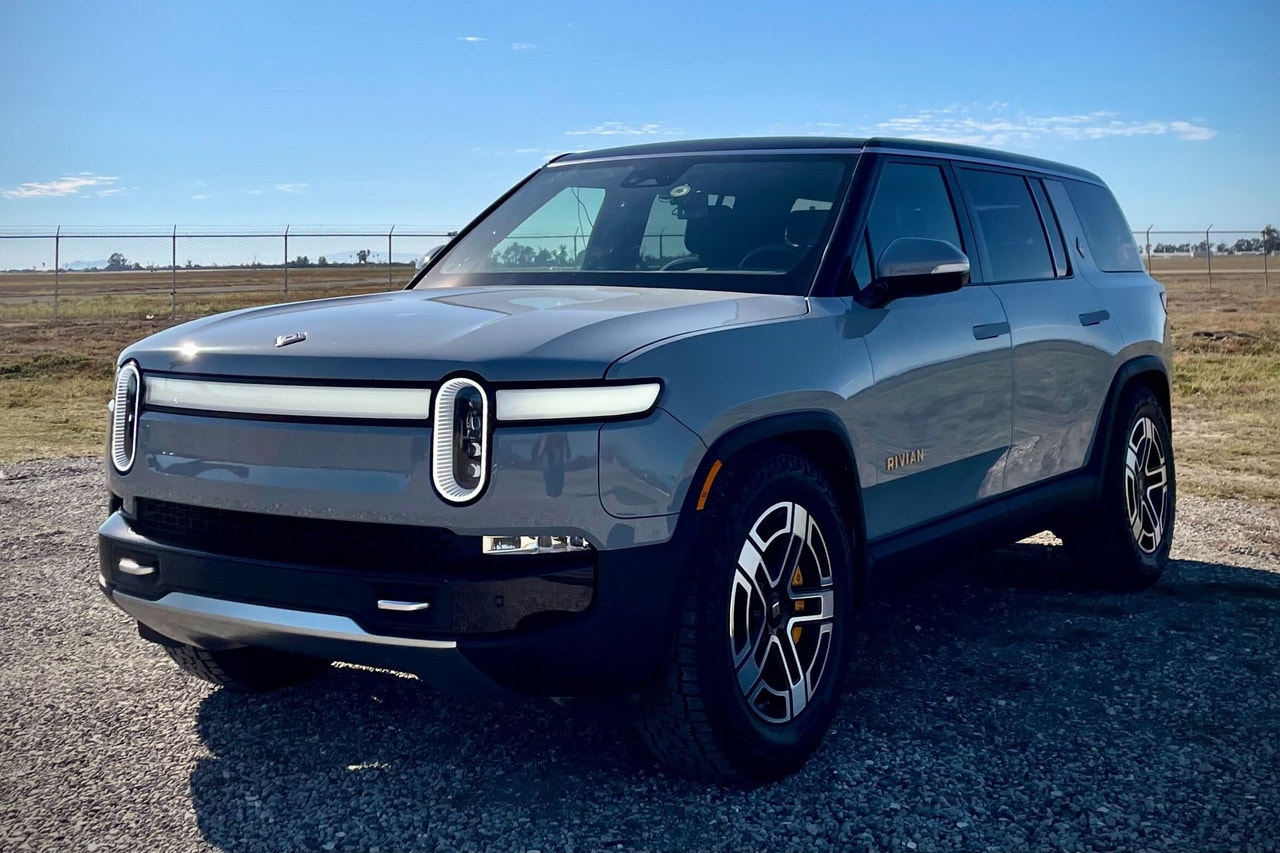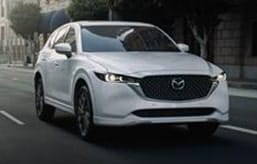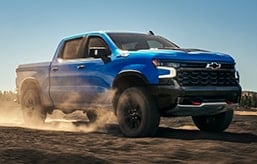- The Rivian R1S outperformed its EPA estimate in Edmunds' real-world EV range test, traveling 330 miles on a single charge.
- That's more range than we saw in the Tesla Model X , the Tesla Model Y and Rivian's own R1T pickup truck, even though all three have higher EPA estimates than the R1S.
- Rivian says the all-terrain tires on our test vehicle should reduce range by about 40 miles, but that obviously wasn't the case here.
EV RANGE TEST: 2022 Rivian R1S Beats EPA Estimate on All-Terrain Tires
A three-row electric off-roader with 330 miles of range? That's a wow.
The three-row 2022 Rivian R1S SUV is the second model from the upstart American automaker after the R1T, an all-electric pickup truck that we added to our long-term test fleet because it impressed us so much. Now here comes the R1S, a go-anywhere large electric SUV with an EPA range estimate of more than 300 miles. We were eager to see how it would perform in Edmunds' real-world EV range test.
We've already put two of the R1T pickup trucks to the test, one with the standard all-season tires and another with chunky all-terrain tires. Rivian says the all-terrain tires should reduce range by about 10% to 15%, or roughly 40 miles, but that wasn't the case for us. In fact, the R1T performed better with the all-terrains (321 miles) than it did without them (317 miles). It should be noted that both figures are better than the 314-mile EPA estimate with the all-seasons.
Because the EPA estimates for the R1S and R1T are nearly identical, we've been wondering if the R1S could replicate the R1T's impressive performance. As it happened, the R1S we tested was fitted with the all-terrains, giving us a chance to see if the R1T's result with the same tires may have been a fluke. Spoiler alert: Nope! Our R1S traveled farther than both of the R1Ts despite the extra meat. Here's how it all went down on test day.
Testing the Rivian R1S in the real world
Edmunds tests every new electric vehicle on the same real-world driving loop to see just how far it can travel from a full charge down to zero miles remaining. If you scroll through our EV range leaderboard, you'll see that most EVs have matched or exceeded their EPA range estimates in our testing. Much of that has to do with our ability to test in near-ideal conditions year-round.
The R1S starts at $78,000 for the base Adventure trim with two motors and the standard-range battery. We tested a R1S Launch Edition, the same trim as both of the R1Ts we've tested. The Launch Edition starts around $90,000 but is no longer available to order. It comes standard with the larger 135-kWh battery pack as well as the quad-motor setup, and this one was fitted with the $4,140 20-inch wheel and all-terrain tire set. Total output is an impressive 835 horsepower and 908 lb-ft of torque. It's worth noting that the large battery pack ($6,000) and quad-motor drivetrain ($8,000) are optional on the Adventure trim. The EPA rating for this Launch Edition is 316 miles, though as mentioned that doesn't account for the 40-mile penalty that the all-terrain tires are said to impose.
For the test, we aired up those Pirelli Scorpion Elect all-terrain tires (275/65R20 116H) to the factory-recommended 48 psi. We weren't all that surprised when the R1S tipped our scales at 7,007 pounds, as large electric trucks and SUVs are basically the heaviest civilian-class automobiles ever. Still, when you consider that the last Lincoln Navigator we tested weighed in at 6,030 pounds despite being 10 inches longer, you start to get a sense of this new breed's formidable mass.
The average temperature over the course of the test was 80 degrees. That's a bit warmer than average for our tests, though we keep the automatic climate control set to 72 degrees no matter what. After a full day behind the wheel, we totaled 330 GPS-verified miles. That's 14 more miles than the EPA estimate, a 4.6% improvement. And again, that's with the all-terrains, which Rivian says should reduce range, not increase it. As of this writing, the only electric SUV that traveled farther in our range tests is the BMW iX xDrive50 (377 miles), though the BMW lacks the Rivian's third row of seating. The Tesla Model X, which has the adult-friendly third-row seats to compete directly with the R1S, topped out at 294 miles in our testing and of course lacks the R1S's off-road chops.
How much did those 330 miles cost?
Range is important, of course, but focusing only on range would be like neglecting to talk about fuel economy in a test of a gas-powered vehicle. It takes a lot of energy to charge up the R1S's 135-kWh battery pack, just like it takes a lot of gas to fill a big SUV's fuel tank. The unit of measurement for electricity consumption, the kilowatt-hour, can be thought of as the EV equivalent of a gallon of gasoline. Electricity, like gas, varies in cost depending on where you live. As of this writing, you'll pay about $0.45 kWh in Hawaii and $0.11/kWh in Washington. Gasoline in those states averages $5 per gallon and $3.96 per gallon, respectively.
After charging to full following the test, we measured the R1S's real-world consumption at 47.4 kWh per 100 miles, 3.3% better than the EPA estimate of 49 kWh per 100 miles. Unlike with fuel economy, lower figures are better here. While it's nice that the R1S was more efficient than its EPA estimate, it's still the least-efficient EV we've tested to date, eclipsing its R1T sibling (46.9 kWh/100 miles), though it should be noted that the R1T also beat its EPA estimate.
Charging the R1S back to full given our observed consumption rate would cost $70.15 in Hawaii but just $16.56 in Washington. If you were in an equivalent gas-powered three-row luxury SUV like the V8-powered Land Rover Range Rover or Mercedes-Benz GLS 580 — both of which have an EPA-estimated combined fuel economy of 18 mpg — a 330-mile drive would have cost $91.74 in Hawaii and $72.62 in Washington.
Over 10,000 miles, the R1S would save about $654.24 in Hawaii and $1,698.79 in Washington. Also, keep in mind that the R1S went from 0 to 60 mph in a downright silly 3.3 seconds — neither the GLS nor Range Rover can get anywhere close to that.
For more information on how we test EV range and how each vehicle performed, we invite you to visit our Real World vs. EPA testing page, which includes both our EV range leaderboard and a table with detailed test results. Our EV range leaderboard is embeddable and will automatically update every time we add a new vehicle.
Edmunds says
The R1S had an impressive showing, outperforming its EPA estimates in our real-world testing and edging out its R1T stablemate in the process. It also did so while fitted with the all-terrain tires, which Rivian says should hurt range, not help it. The inefficiency is something to be aware of, but especially in light of the R1S's astonishing acceleration and reassuring range, we expect owners will be happy to pay those extra dollars on their electricity bills.





 by
by